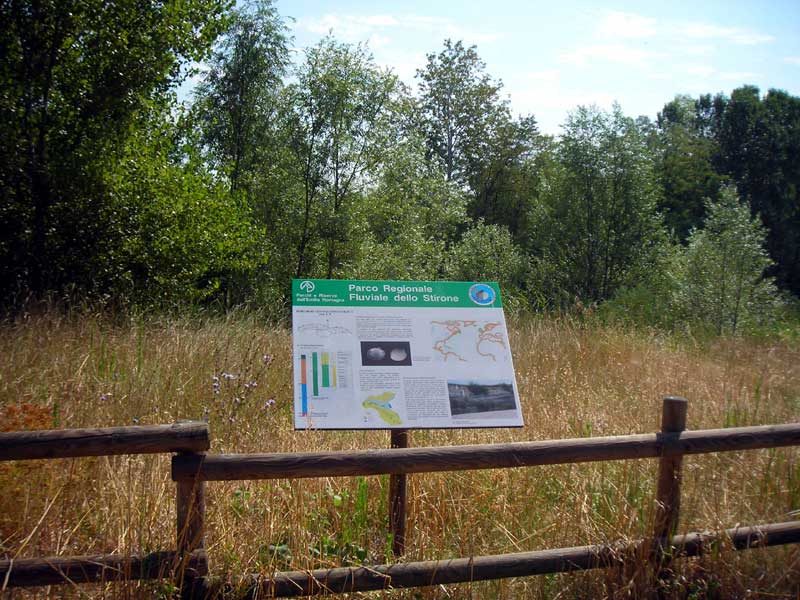San Nicomede Trail
Stirone Area





- Duration: 1 hour 30 minutes
- Difficulty Level: simple flat route
- Length: 2 km
A walk back to the past
The first lap of this trail is the wonderful San Nicomede church, built in the 9th century to welcome the relics of the Saint. Already known since the 7th century, this place was the destination of an important pilgrimage linked to the therapeutic virtues ascribed to the water of the spring Fonte Broccola (meaning "overflowing"), used to treat headaches. According to the legend, the pilgrims used to come from all over Europe with a stone on their head and were healed by a sip of water from the spring. In the year 880, the church was built with the stones the pilgrims had brought over the centuries near the spring.
The trail continues across the wood formed by black poplars, downy oaks, dogwoods, and elders with panoramic points where you can enjoy the view over the canyon slopes dug by the stream. You will shortly reach the area of greatest geo-paleontological interest for the presence of fossiliferous outcrops, from locality "Le Cascatelle" upstream (the place name derives from the presence of waterfalls until the 1980s; they have subsequently disappeared because of the stream erosion for the gravel extraction and the subsequent formation of the canyon) to the "bend of the ocean quahog" downstream (the place has been named after the presence of this bivalve mollusk which usually lives in cold climates and still lives in the North Sea).
The site is important because it witnesses the Plio-Pleistocene limit, that is the passage from the Tertiary to the Quaternary Age (dating back to 1.8 million years ago), characterized by a marked climatic deterioration leading to the disappearance of tropical-like wildlife associations (that can be found upstream Cascatelle) and the colonization by the "cold guests" (downstream).
Downstream the outdoor Museum, on the wonderful walls created by the stream erosive action, you can admire one of the greatest Bee Eater reproduction nuclei in Northern Italy. This migratory bird with a multicolored plumage comes from Africa at the end of April and begins to build its nest almost immediately; then, after mating and breeding its chicks for about two months, it leaves at the beginning of September to reach the wintering sites.
In front of the Bee Eater colony, along the bank underlying the former incinerator, a natural engineering measure was carried out by the Park in 1998 to recover a stretch of stream subject to erosion in one of the most important paleontological areas.
After admiring the fossils and this extraordinary bird, you will return to the car park and may rest in the picnic area equipped with benches, tables, and a water point.

Descriptive panels Cascatelle
(photo by PR Stirone e Piacenziano)












